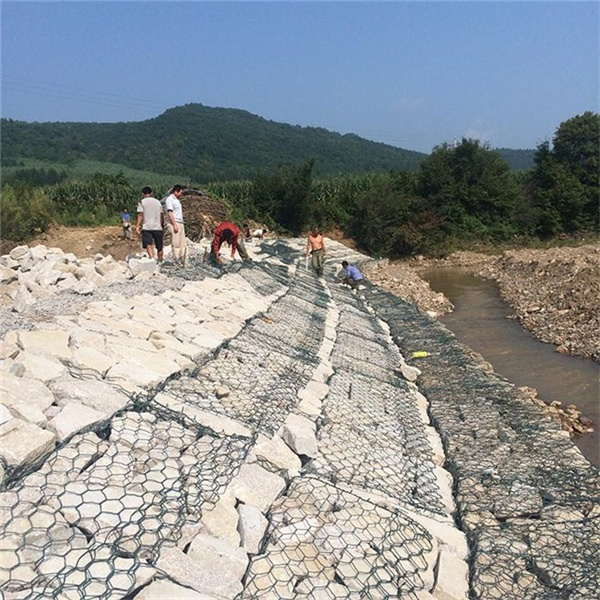សីហា . 11, 2024 14:20 Back to list
Optimal Design Ratios for Gabion Walls to Enhance Stability and Aesthetic Appeal
The Best Gabion Wall Ratio Balancing Strength and Aesthetics
Gabion walls are increasingly becoming a popular choice in landscaping, civil engineering, and environmental projects due to their aesthetic appeal and structural integrity. These structures consist of wire mesh baskets filled with stones or other materials, providing an ideal solution for erosion control, retention, and decorative landscaping. One of the key considerations in designing an effective gabion wall is determining the best gabion wall ratio, which encompasses the dimensions and fill materials used to optimize both performance and appearance.
When discussing gabion walls, the ratio typically refers to the height, width, and length of the wall, as well as the type and size of the fill material. One of the most conventional dimensions for gabion baskets is the standard size of 1 meter in height, 1 meter in width, and 1 meter in length. This ratio offers a stable balance that caters to various applications while facilitating ease of construction and maintenance.
Structural Stability
The first aspect to consider when determining the best gabion wall ratio is structural stability. A well-proportioned gabion wall prevents deformation or collapse caused by soil pressure, hydraulic forces, or settling over time. Engineers generally recommend a ratio of 11 for the height-to-base width for most typical applications. For example, if you construct a wall that is 1 meter tall, it should ideally have a base width of at least 1 meter. This ensures that the wall can withstand the forces acting upon it while maintaining its integrity over time.
In situations where the wall is subjected to additional pressure, such as in a retaining wall scenario, it might be necessary to increase the base width to 1.5 times the height. This foresight adds stability, particularly in areas with high water tables or loose soil conditions.
Aesthetic Considerations
best gabion wall ratio

While structural stability is paramount, the aesthetic qualities of a gabion wall should not be overlooked. Gabion walls can serve as a beautiful element in the landscape when designed carefully. The choice of fill material plays a crucial role in the overall visual appeal. Natural stone provides a rustic look, while colored aggregates might fit modern designs better.
Additionally, the ratio of fill material also affects the overall appearance. A common aesthetic recommendation is to fill the baskets to a level that allows for stones to be partially exposed, creating a more natural and organic look. This could mean selecting larger stones and allowing for some variation in size, creating texture and interest.
Practical Considerations
In practical applications, the best gabion wall ratio may also be influenced by local regulations and environmental considerations. It is crucial to ensure that the wall is designed to manage water flow effectively. Efforts should be made to incorporate drainage solutions within or around the wall structure, particularly in areas prone to heavy rainfall. Often, the ratio of drainage materials to fill materials needs to be carefully calculated to not overwhelm the structure.
Conclusion
In conclusion, determining the best gabion wall ratio involves a careful blend of engineering principles, aesthetic considerations, and practical implications. A ratio of height to width around 11 for standard applications can provide stability, while larger bases are advisable under certain conditions. Combine these structural elements with thoughtful material choices and design aesthetics, and a gabion wall can serve both functional and decorative purposes effectively. Ultimately, whether you're building a retaining wall, a decorative feature, or an erosion control solution, understanding and applying the best gabion wall ratio will ensure a durable and visually appealing structure that stands the test of time.
-
Visualizing Gabion 3D Integration in Urban Landscapes with Rendering
NewsJul.23,2025
-
The Design and Sustainability of Gabion Wire Mesh Panels
NewsJul.23,2025
-
The Acoustic Performance of Gabion Sound Barriers in Urban Environments
NewsJul.23,2025
-
Mastering the Installation of Galvanized Gabion Structures
NewsJul.23,2025
-
Gabion Boxes: Pioneering Sustainable Infrastructure Across the Globe
NewsJul.23,2025
-
Custom PVC Coated Gabion Boxes for Aesthetic Excellence
NewsJul.23,2025
-
Installation Tips for Gabion Wire Baskets in Erosion Control Projects
NewsJul.21,2025






